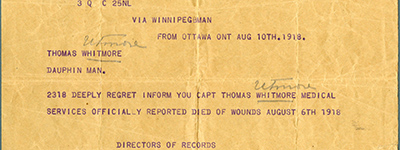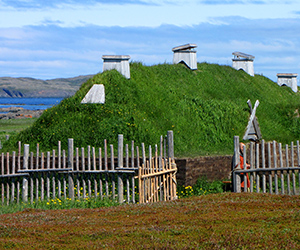CANADA HISTORY - Politics-Provinces
POLITICS - ONTARIO
Ontario's history begins long before European explorers arrived on its shores, reaching deep into the prehistoric past, when Indigenous peoples, such as the Huron-Wendat, Anishinaabe, and Haudenosaunee, flourished across the region. For thousands of years, these nations cultivated rich societies centered on hunting, fishing, and agriculture, particularly along the fertile lands of the Great Lakes basin. They developed sophisticated political systems, trade networks, and cultural practices, with the land’s abundant resources, particularly fish and game, sustaining them. Ontario’s geography, dominated by the Great Lakes and vast forests, shaped the way of life for these early inhabitants, fostering connections between communities through canoe routes and well-worn paths.
The arrival of French explorers, such as Samuel de Champlain in the early 17th century, marked a pivotal moment in Ontario’s history. Champlain’s encounters with the Huron-Wendat and other Indigenous peoples laid the foundation for the fur trade, which would come to dominate the region for over two centuries. The French established trading posts along the Great Lakes, and Ontario became a crucial link in the fur trade routes that stretched from the Atlantic to the interior of North America. Indigenous nations were not mere participants in this trade—they were central players, guiding European traders through the vast, unfamiliar landscapes and negotiating alliances that would shape the course of Ontario’s development.
In the mid-18th century, the balance of power in Ontario shifted as the British defeated the French in the Seven Years’ War, and Ontario fell under British control. The region, which had been largely shaped by French colonial interests, now became a battleground for British and American ambitions. The American Revolution further complicated matters, as Loyalists—those who remained loyal to the British Crown—fled northward into Ontario after the Treaty of Paris in 1783, which ended the conflict. This influx of settlers led to the creation of Upper Canada in 1791, a colony designed to accommodate Loyalists and reinforce British influence in the region.
The early 19th century was a period of rapid change for Upper Canada, soon to become Ontario. The War of 1812 between Britain and the United States tested the young colony’s resolve, with battles fought on its soil, including the famous engagements at Queenston Heights and Lundy’s Lane. The war solidified Ontario’s identity as a bastion of British loyalty in North America and fostered a sense of unity among its diverse population of Loyalists, settlers from the British Isles, and Indigenous allies who had fought to defend their homelands.
In the decades following the War of 1812, Ontario’s population grew rapidly, driven by immigration from Europe and the United States. Settlement expanded into the fertile farmlands of southwestern Ontario and along the St. Lawrence River, while cities like Toronto (originally York) and Kingston began to develop as centers of commerce and governance. The construction of canals, such as the Rideau Canal, opened new avenues for trade, linking the interior to the St. Lawrence River and the Atlantic. This period of growth, however, was not without its tensions. The Family Compact, a small elite that dominated the political and economic life of Upper Canada, became a source of frustration for many settlers, leading to the Rebellions of 1837, led by William Lyon Mackenzie. Though the rebellion was quickly suppressed, it exposed deep-seated grievances about the lack of responsible government and set the stage for political reform.
The mid-19th century brought dramatic changes to Ontario’s political landscape. The Act of Union in 1841 merged Upper Canada with Lower Canada (now Quebec), creating the United Province of Canada, with Ontario (Canada West) and Quebec (Canada East) sharing a single government. This uneasy political arrangement reflected the growing divide between English and French-speaking populations, but it also laid the groundwork for the confederation of Canada in 1867. Ontario, led by figures such as George Brown and John A. Macdonald, played a central role in the discussions that led to Confederation, seeking to balance the interests of its rapidly growing population with those of its neighbors. On July 1, 1867, Ontario officially became one of Canada’s four founding provinces, entering Confederation alongside Quebec, New Brunswick, and Nova Scotia.
The post-Confederation era was one of unparalleled growth and development for Ontario. The late 19th century saw the expansion of railways, which connected Ontario’s agricultural heartland to national and international markets. Toronto emerged as the province’s economic powerhouse, while Ottawa, designated as the nation’s capital, solidified its role as the political center. Ontario’s economy, initially rooted in agriculture, began to diversify as industries such as timber, mining, and manufacturing took root. The discovery of rich mineral deposits in northern Ontario, particularly around Sudbury and Timmins, transformed the province into a major player in Canada’s resource-based economy. These developments attracted waves of immigrants from Europe, further diversifying the province’s population.
The early 20th century brought both prosperity and challenges to Ontario. The province’s industrial base expanded rapidly, particularly during World War I, when Ontario’s factories produced munitions and materials for the war effort. However, the post-war period was marked by economic volatility, with the Great Depression of the 1930s hitting Ontario hard. Unemployment soared, and many farmers and industrial workers found themselves struggling to survive. In response to the economic crisis, new political movements emerged, including the Co-operative Commonwealth Federation (CCF), which advocated for socialist policies to address the inequities of the capitalist system.
World War II brought a resurgence of industrial activity to Ontario, as the province became the manufacturing hub of Canada’s war effort. The auto industry, centered in cities like Oshawa and Windsor, produced vehicles and equipment for the military, while Ontario’s mines supplied the raw materials needed for the war. The post-war period, however, was one of unprecedented growth. Ontario experienced an economic boom, fueled by industrial expansion, urbanization, and the rise of the middle class. Suburban development around cities like Toronto transformed the landscape, while massive infrastructure projects, such as the construction of the St. Lawrence Seaway, further integrated Ontario into the North American economy.
Politically, Ontario has long been a battleground between liberal and conservative forces. The Progressive Conservative Party, led by figures like Leslie Frost and Bill Davis, dominated provincial politics for much of the mid-20th century, advocating for balanced budgets, economic development, and investment in public services. Under Davis’s leadership in the 1970s and early 1980s, Ontario expanded its education system, invested in infrastructure, and played a leading role in national constitutional debates. Davis’s pragmatic conservatism helped shape Ontario into a model of political stability during a period of rapid social and economic change.
The late 20th century, however, brought new challenges. The rise of the New Democratic Party (NDP), led by Bob Rae, reflected growing dissatisfaction with the political status quo. Rae’s government, elected in 1990, faced the difficult task of governing during a period of economic recession. His government’s efforts to balance social spending with fiscal responsibility proved controversial, and the NDP’s time in power was short-lived. In 1995, Mike Harris’s Progressive Conservative Party swept to power with its “Common Sense Revolution,” promising tax cuts, reduced government spending, and deregulation. Harris’s policies, which included the privatization of key industries and services, reshaped Ontario’s political and economic landscape and sparked significant debate about the role of government in society.
Ontario’s modern history is one of growth, diversity, and ongoing change. The province has emerged as Canada’s economic engine, with Toronto evolving into a global city and financial hub. Ontario’s manufacturing sector, though challenged by globalization and technological change, remains a critical part of its economy, while the province’s burgeoning technology and service industries point to a new future. Ontario’s multiculturalism, shaped by waves of immigration from around the world, has made it one of the most diverse provinces in Canada, with cities like Toronto and Ottawa reflecting this global character.
Today, Ontario’s challenges include balancing economic growth with environmental sustainability, addressing social inequalities, and navigating its role within the broader Canadian federation. Its history, from its Indigenous roots through its development as a political and economic powerhouse, reflects the dynamism of a province that has always been at the heart of the Canadian experience. Leaders like John A. Macdonald, William Lyon Mackenzie, George Brown, Bill Davis, and Kathleen Wynne have all left their mark on the province’s history, guiding Ontario through periods of transformation and uncertainty. As the province continues to evolve, its history serves as both a testament to its resilience and a reminder of the diverse forces that have shaped its path.
Cha












